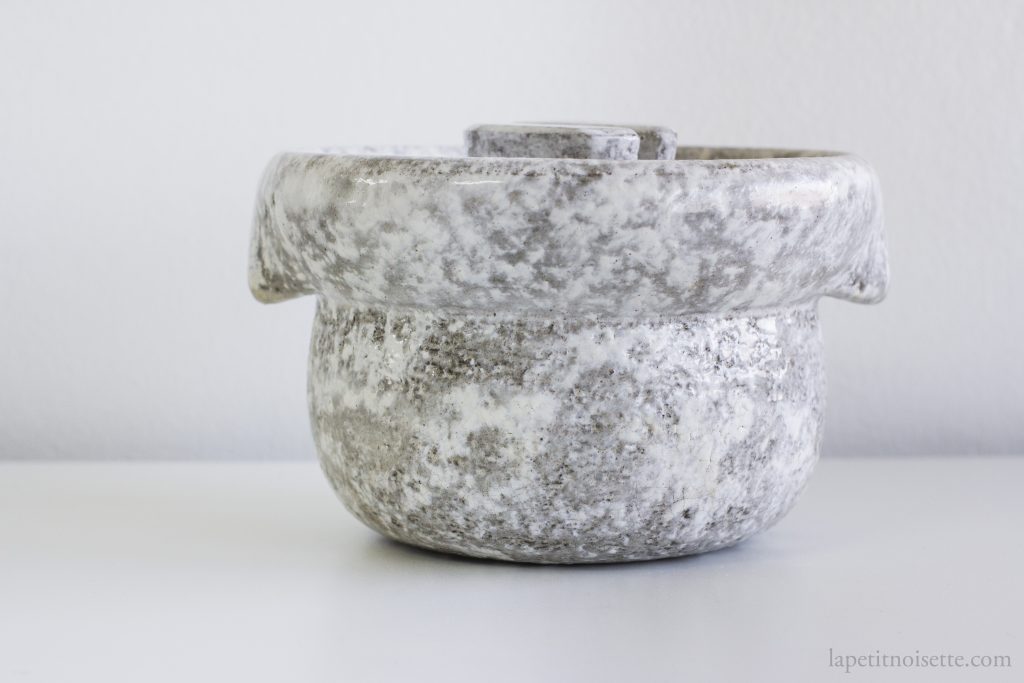
“The use of Kumoi Kiln pottery in high end Japanese restaurants actually has nothing to do with its association with luxurious glamour, such as fabrics embroidered with Gucci or Louis Vuitton monograms. Earthenwares in high-end Japanese restaurants are a subtle, silent form of art, comparable to elegantly proportioned fonts inked on G. F. Smith Takeo Stock. Many of Japan’s high-end restaurants are frequented by the same old patrons. They may not even know the name Kumoi Kiln, yet the same full glaze and colour palette, has become part of the aesthetic trademark of these restaurants, just like how bamboo is the material associated with Japanese furniture.”
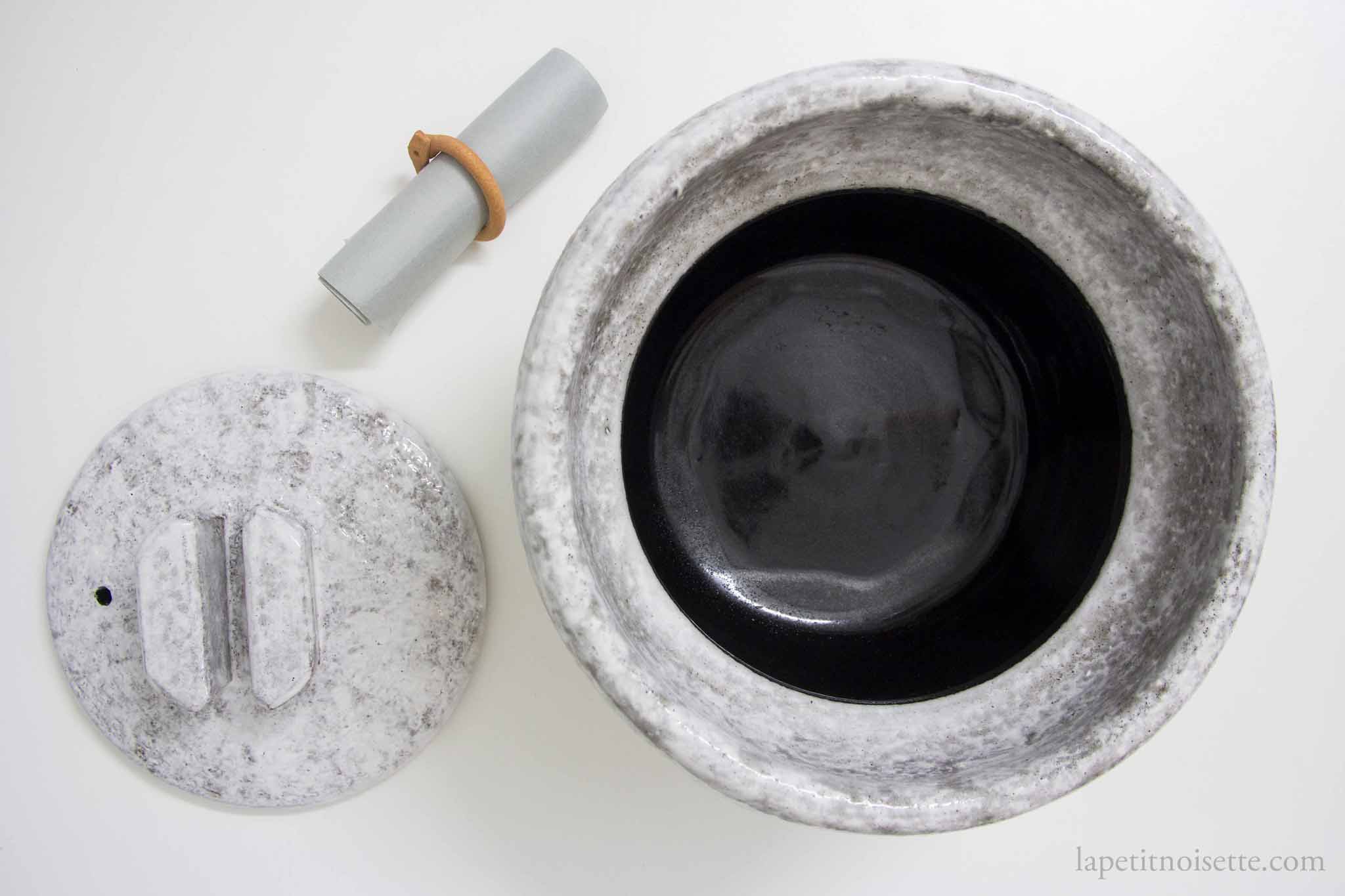
*A similar claypot is also made by his brother, Isshiro Kiln Donabe Claypots (一志郎窯) by Nakagawa Isshiro (中川一志郎先生). Check out our articles on different donabe makers and rice varieties.
Whilst working at a 3 Michelin star sushi restaurant, I was introduced to Kumoigama clay pots as we used their claypot to cook our rice instead of a traditional iron Hagama or electric rice cooker. Currently run by the 9th generation head of family Nakagawa Ippento (中川一辺陶先生, born 1956), Kumoi Kiln (雲井窯) makes the highest quality traditional handmade Japanese claypots. From what I can tell Kumoi Kiln’s claypot rice cookers seem to have the greatest outreach in bar-type ryotei restaurants where the food is cooked in front of you and therefore the aesthetic of the rice cooker matters.
In the year 1765, Kumoi Kiln was founded in Fushimi, Kyoto, before it moved to Shigaraki City (信楽町) in the Koka district (甲賀) of Shiga prefecture (滋賀県) after World War II. This is noteworthy because Shigaraki is known as one of Japan’s Six Ancient Kilns (六古窯), a category created by Koyama Fujio (小山富士夫) to denote Japan’s most prestigious ceramic kilns. The Six Ancient Kilns are:
- Bizen (備前焼, Bizen-yaki)
- Echizen (越前焼, Echizen-yaki)
- Seto (瀬戸焼, Seto-yaki)
- Shigaraki (信楽焼, Shigaraki-yaki)
- Tamba-Tachikui (丹波立杭焼, Tamba-Tachikui-yaki)
- Tokoname (常滑焼, Tokoname-yaki)
Shigaraki first became famous for its tea ware due to its proximity to Kyoto and Nara but soon transitioned into making jars and pots that were known for their special quality of clay. The actual importance and accuracy of the Six Ancient Kilns category classification is disputed as Japan had many other kilns at that time that were just as important, including Iga kilns in Mie Prefecture. But that is for another article. Nonetheless, Kumoi Kiln have built their reputation over the years and can be found exclusively in almost all traditional Japanese Michelin starred restaurants, many who have been long time patrons of the kiln.
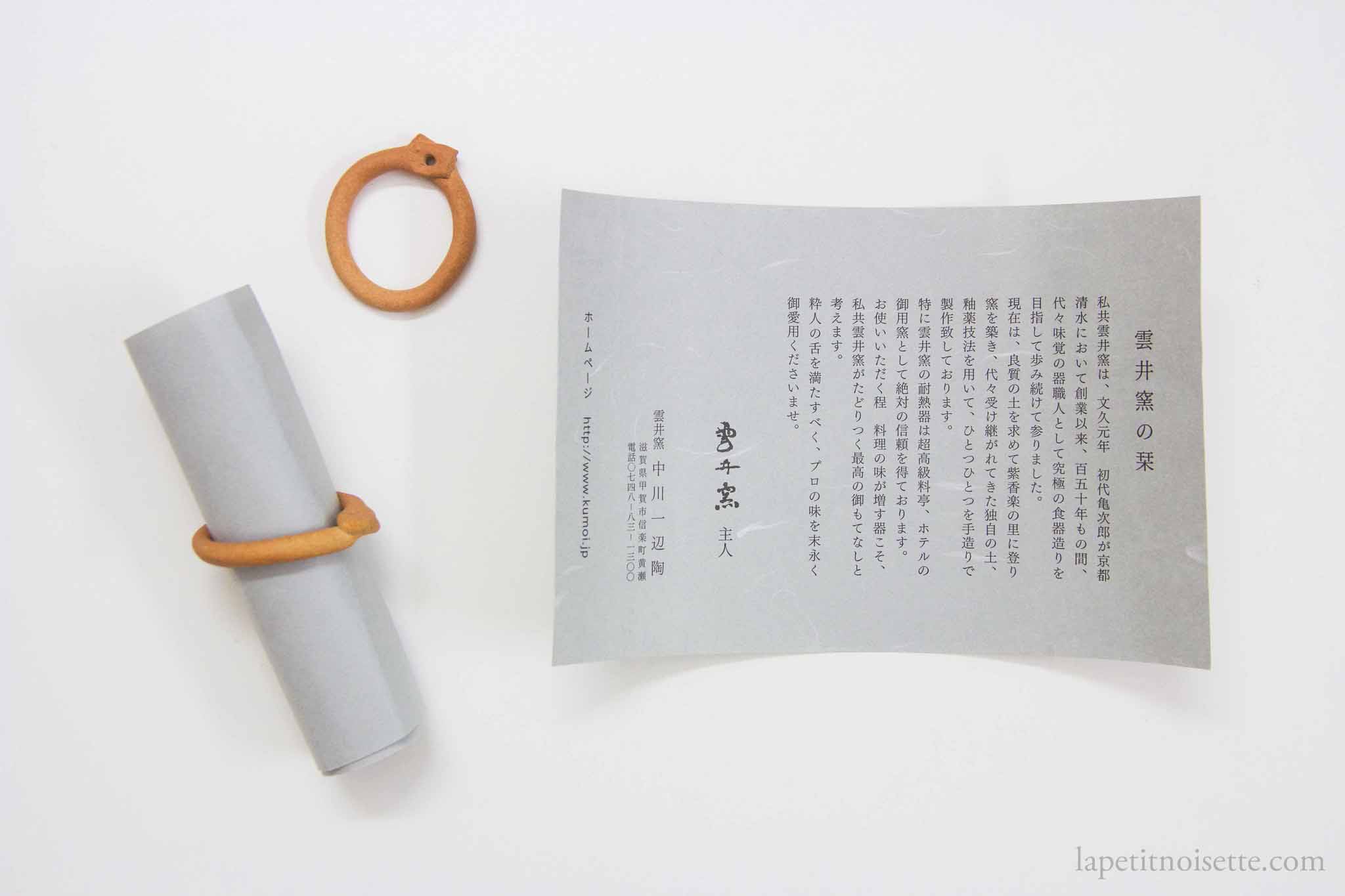
Kumoigama produces claypots specifically used for cooking rice, as well as traditional claypots used in donabe cuisine. Rice and various hotpot dishes made from their claypots taste extra delicious due to their pot’s extremely even heating as well as heat retention, allowing to food and rice to cook gently and evenly. The secret behind the pot’s characteristics lie in the clay used to make the pot as well as its design.
The clay used by Nakagawa Ippento to make the pots has been specially selected and passed down from generation to generation. The clay is aged and stored in a stone room for many years in naturally humid conditions, humid enough for condensation to occur on the walls of the room. In order to adjust the firmness and stickiness of the clay, the workers use their feet to step on the clay, a method used exclusively by them. The water used to mix the clay into the correct consistency is also special. Known as “living water”, it is rich in micro-organisms, which in turn burn up during the heating process, leaving thousands of microscopic bubbles in the pot’s structure, increasing it’s heat retention properties. Once mixed together, the clay and water mixture is actually tasted personally by Nakagawa Ippento as a way to ensure quality. That right- he actually sticks his finger into the clay slurry and consumes a good lick of it.
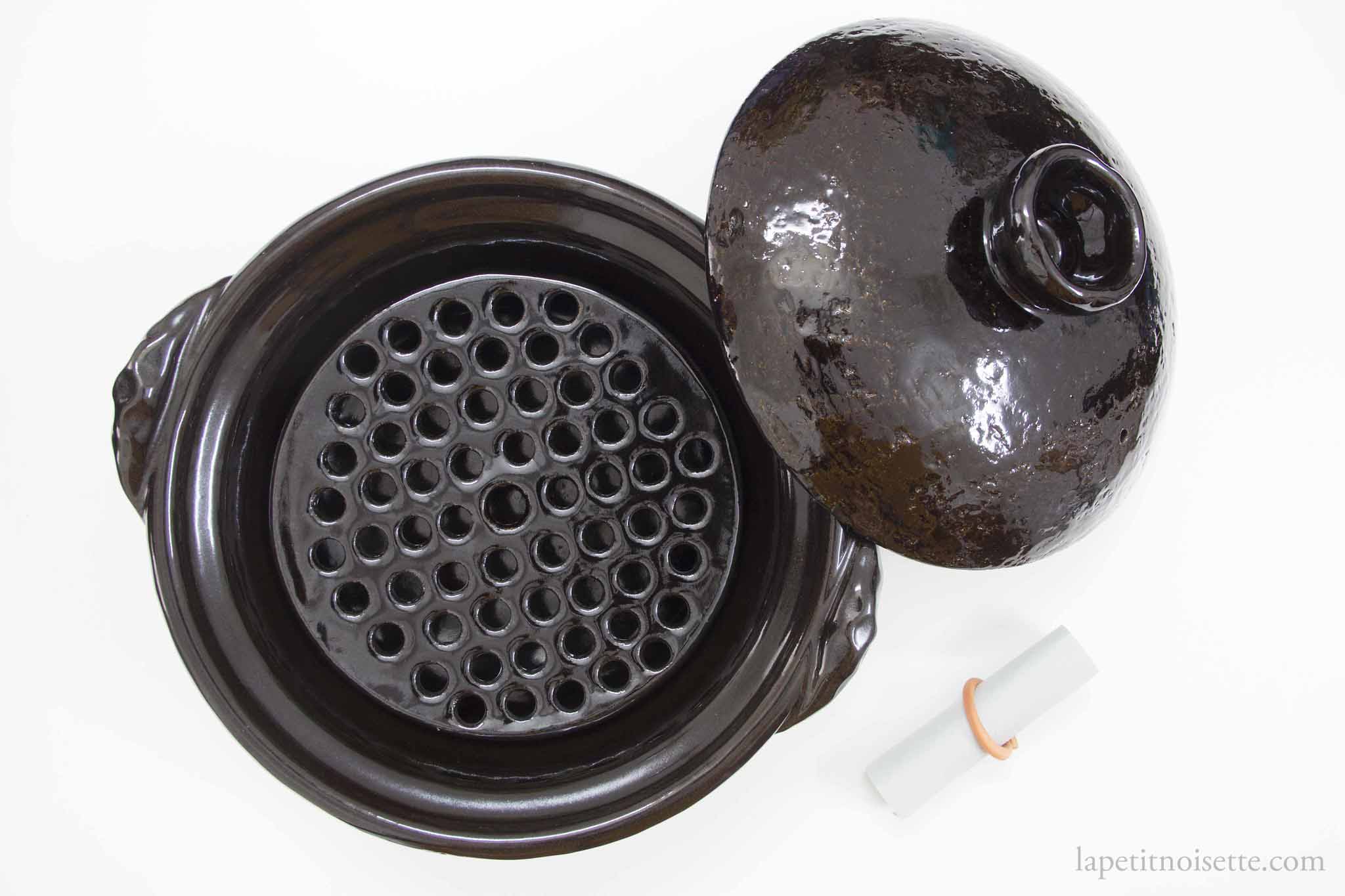
The clay used to make Kumoi clay pots is not unlike that of the currently popular Kamado-san Iga clay rice-cooker. Whilst the Kamado-san Iga rice cooker is widely available and currently sold in many places over Japan, Kumoi clay pots have several advantages over the Kamado-san Iga rice cooker. Primarily, the pots made at Kumoi kiln are 3 times thicker compared to traditional donabe claypots. Whilst this means they heat up slower, it also means they heat up much more evenly, and also retain their heat for extremely long periods of times. Furthermore, Nakagawa Ippento was able to invent a method to glaze the entire bottom, including the bottom of the pot which is usually left unglazed. This means that the pot can be exposed to high heat or a powerful flame immediately without the clay breaking from expansion.
When it comes to practicality however, Kumoi clay pots tend to be over 4 times the price of that of Kamado-san Iga rice cookers and are significantly harder to find.
Because the is entire pot is thick and fully glazed, rice and food at the bottom of the pot also seldom burns as the heat is more even and gradual.
Kumoi Kiln Clay Rice Cookers (雲井窯の御飯鍋)
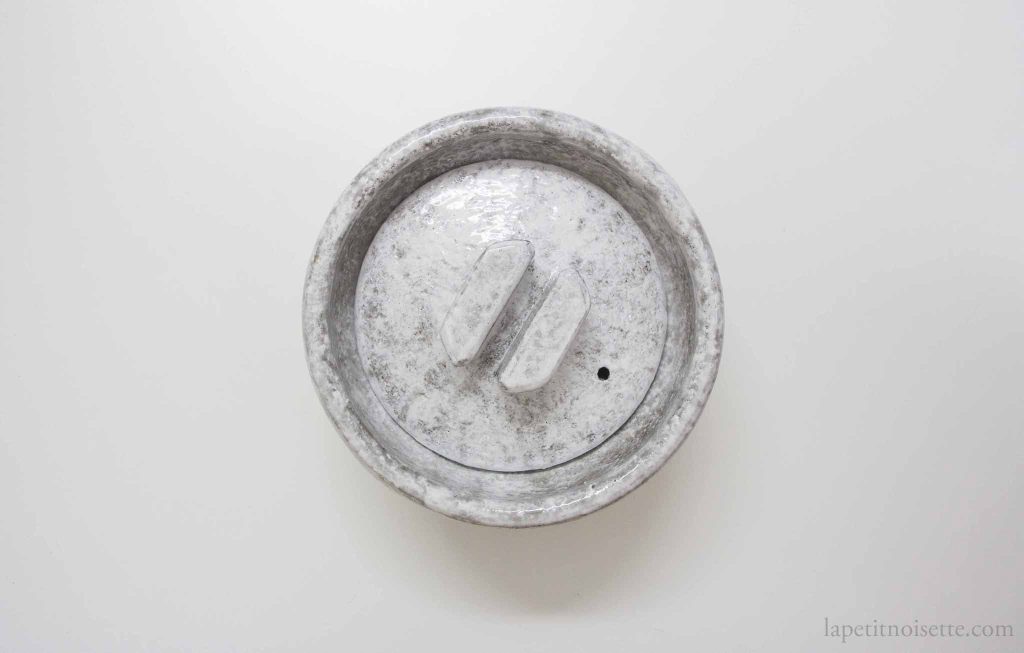
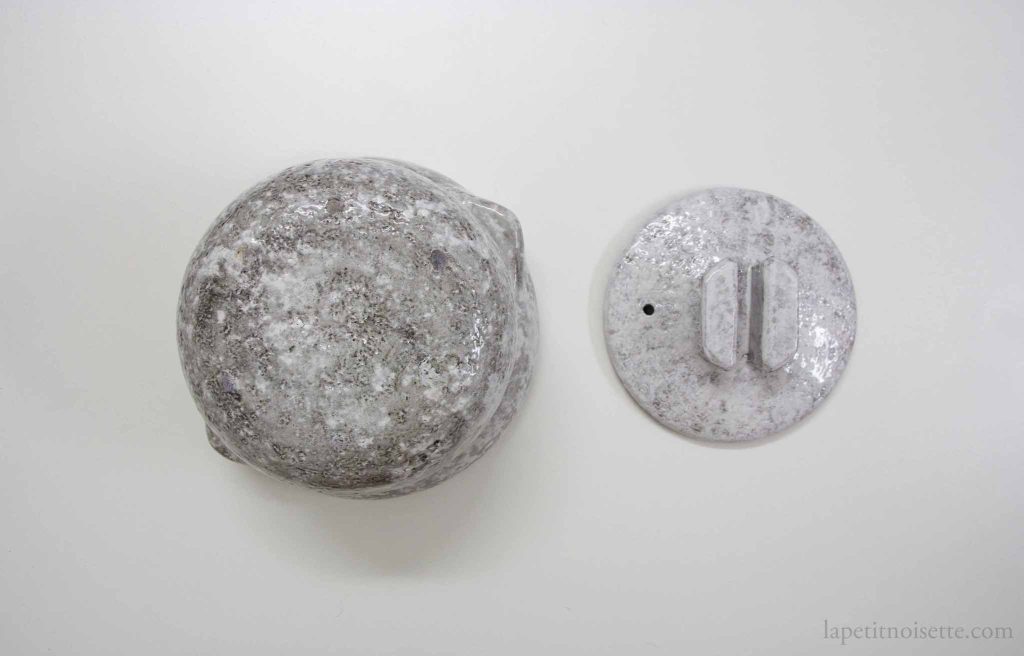
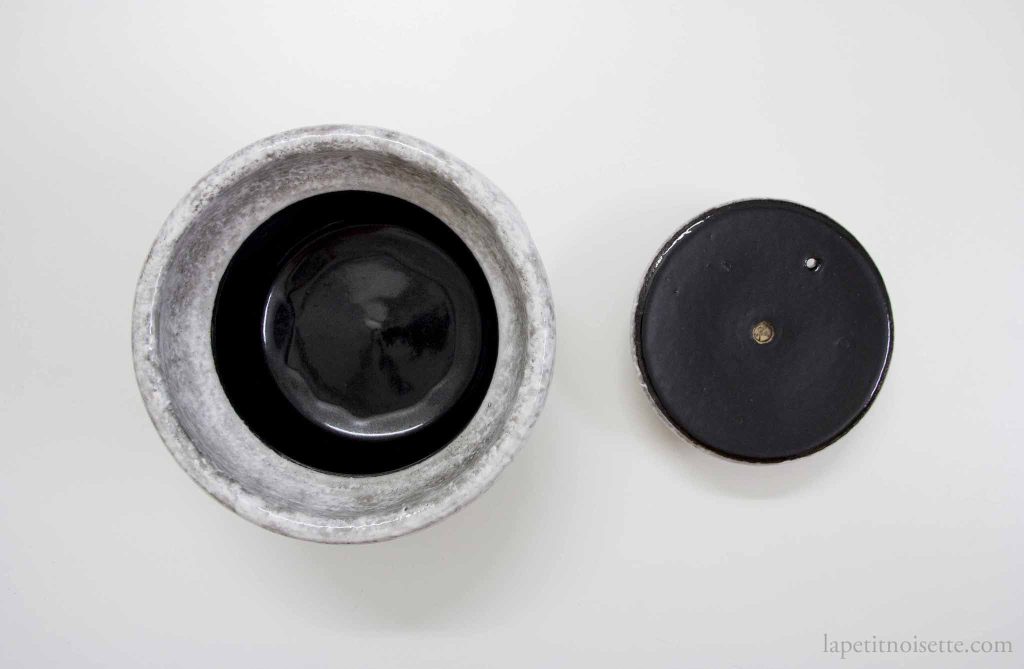
The most sought after creation of Kumoigama, the clay rice cookers follows a design inspired by the pots found in Japan during the Jomon period. The body of the pot is tall and deep with a rounded bottom. This allows steam and heat to circulate the pot better compared to a shallow pot. The lid of the pot is also extremely heavy, but not a tight fit. The weight of the lid is enough to keep the steam in. The rice cookers come in either black or brown, with a rarer white version with a “snow” glaze being occasional available (雪紋御飯鍋). The thick walls of the pot allow each grain of rice to be cooked evenly without burning. The aromas and flavour of the rice cooked from this pot are exceptional.
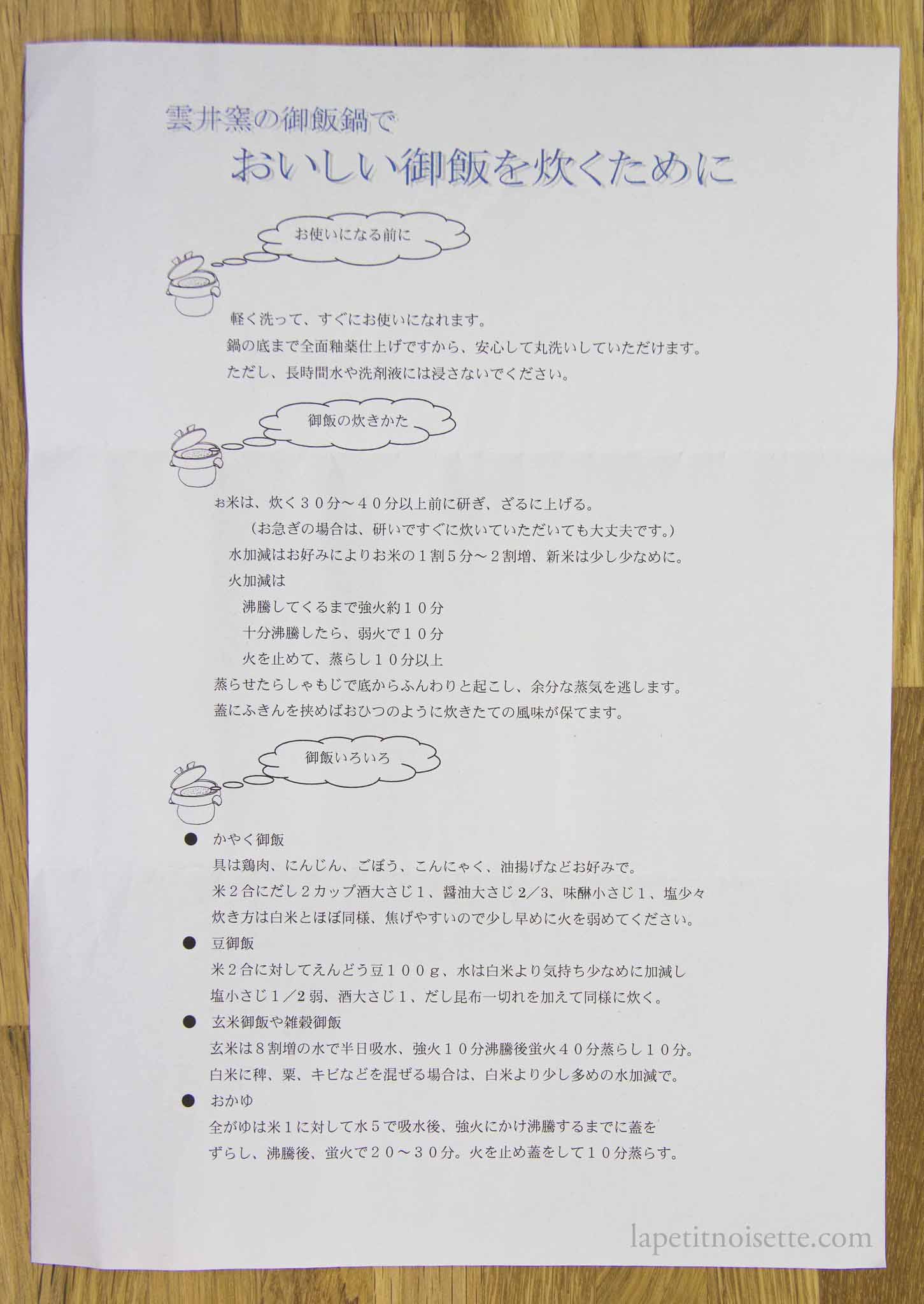
The instructions to cook rice in these pots slightly differ compared to other donabe rice cookers. After lightly washing with only water, the claypot is ready to be used. Nakagawa Ippento himself recommends washing and soaking the rice 30 to 40 minutes before cooking it with 115 to 120% of the rice’s weight in water. This means that for 100g of rice, we would add 120ml of water. Cook the rice on high heat until the water is boiling (around 10 minutes). The water is boiling when steam can be seen escaping from the lid of the pot. Once boiling, turn down the heat to low and cook for 10 minutes, before allowing the rice to rest of 10 more minutes with the lid on. The residual heat of the pot will be enough to finish cooking the rice. Due to the thickness of the clay as well as the full glaze, high heat can be applied to the pot immediately without it cracking.
This is slightly different from recipe we used to cook rice at the restaurant which you can find here.
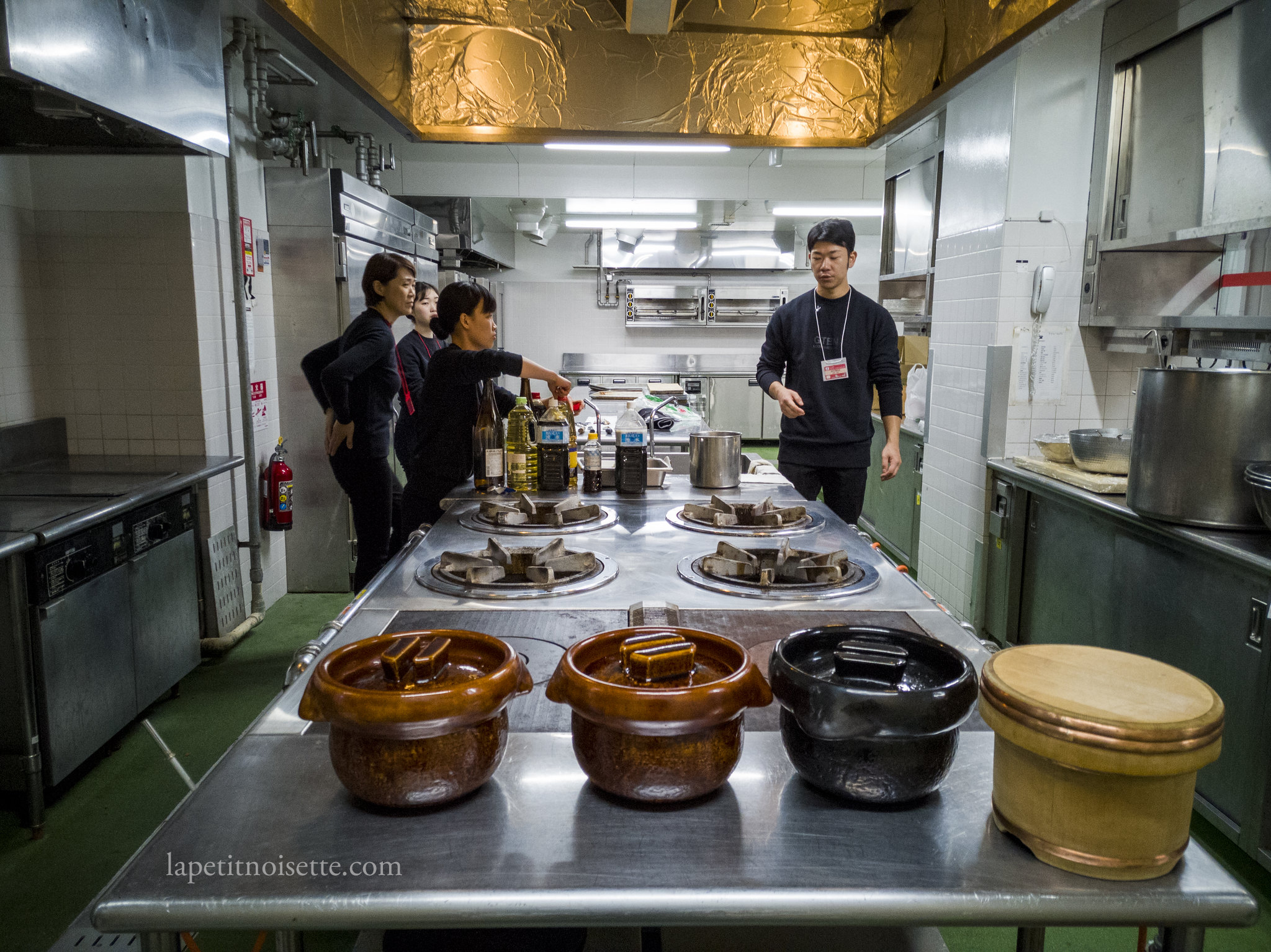
Kumoi Kiln Donabe Pot (土鍋)
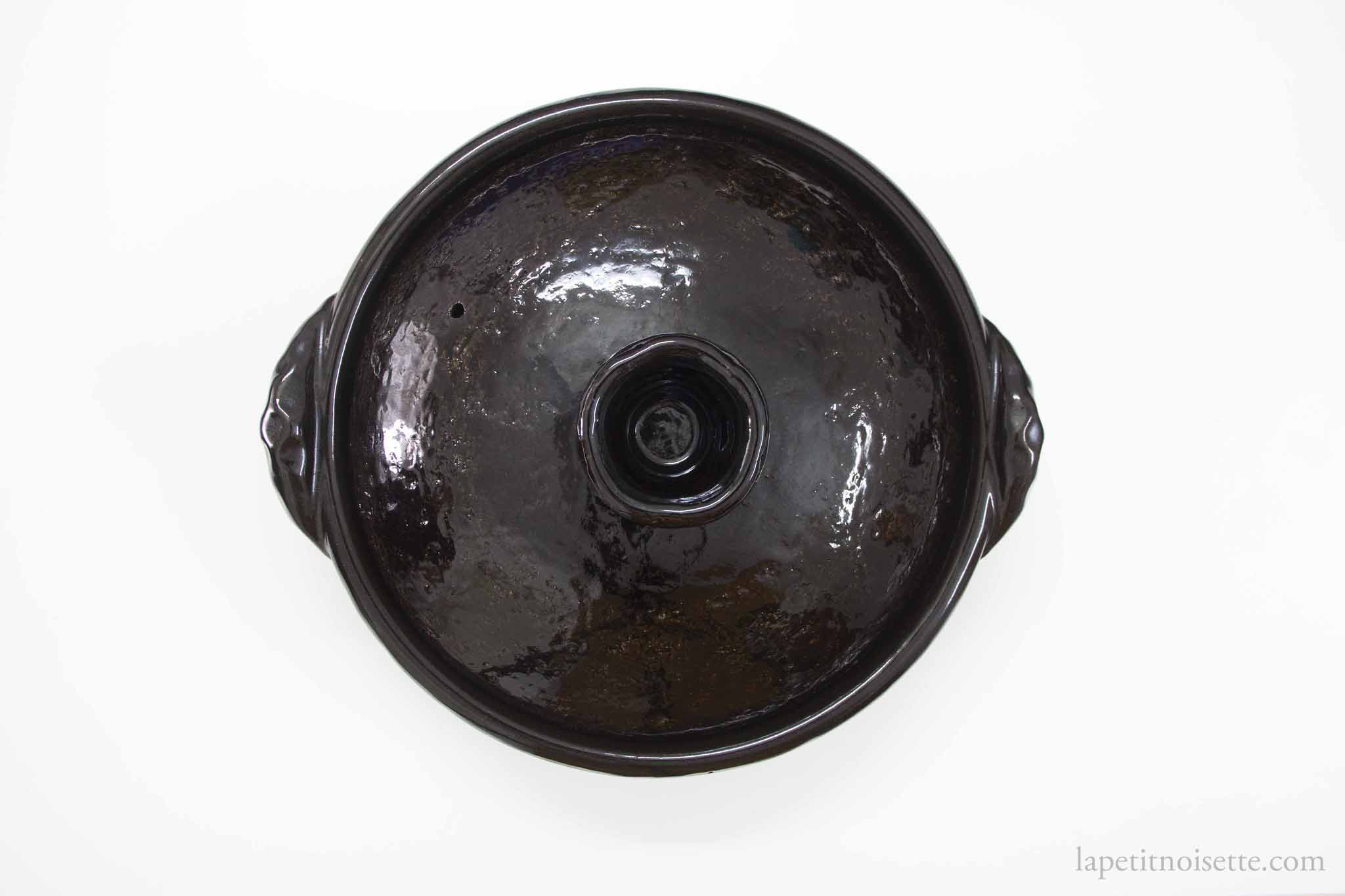
In terms of normal Donabe claypots, Kumoigama produces two different designs of Donabes. A brown one with a clay leaf as the lid handle known as 飴釉蓋木ノ葉 and a black one with a more standard lid handle known as 鴨釉. The claypots are made in the same way as the famous Kumoi Kiln rice cooker and are thus very high quality. In terms of value for money however, I feel as though the the even heating and excellent heat retention play more important role when cooking rice when compared to normal Donabe stews and soups. Whilst they still provide extreme heat retention that is useful during the winter, they do not cook superior stews and soups with the same ingredients, unlike the rice cooker which actually makes better rice compared to other rice cookers when using the same rice.
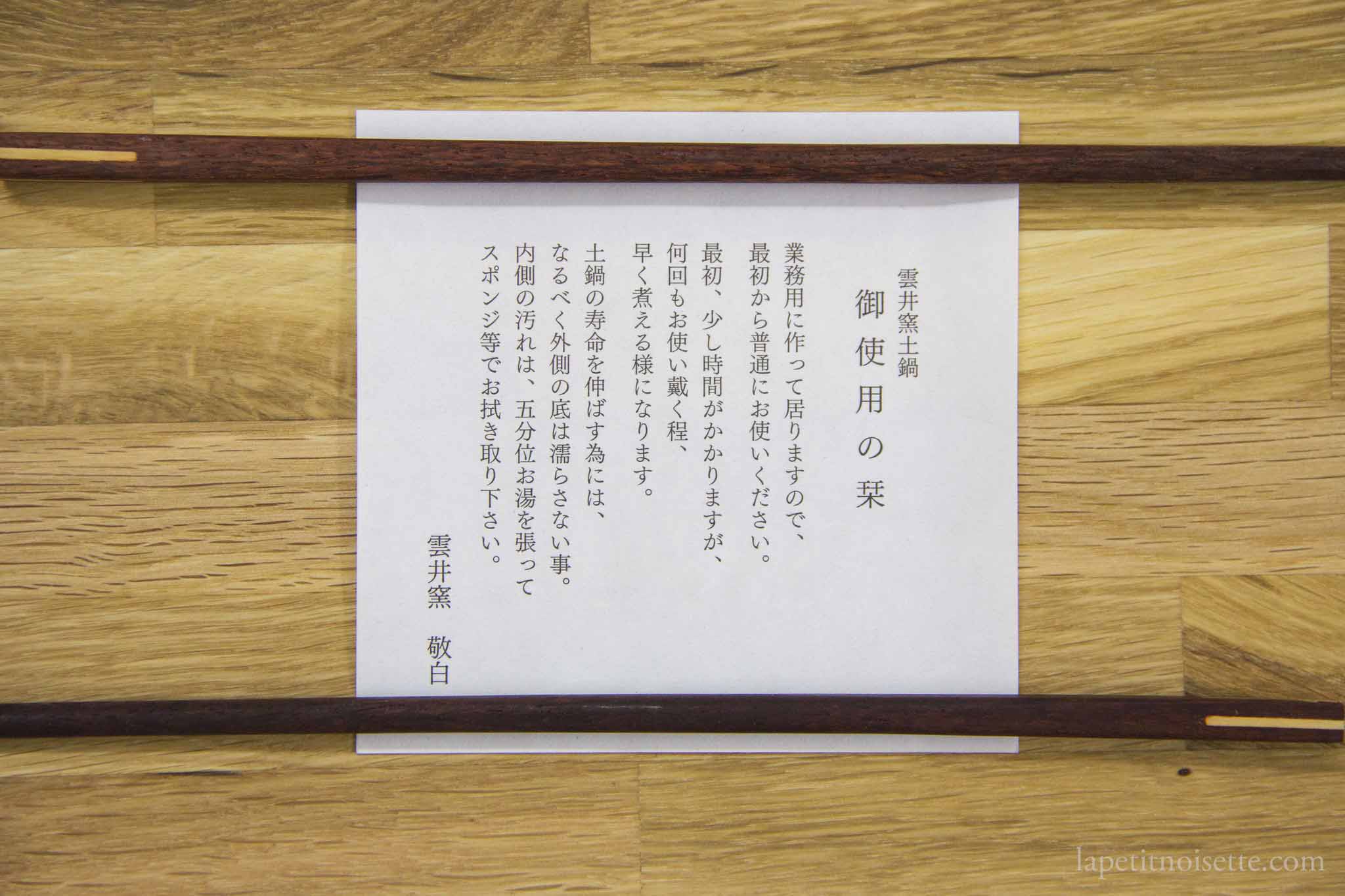
Kumoi Kiln also make high quality clay steamer attachments that you can sometimes buy with the pot though much rarer compared to the pots themselves (as if the pots aren’t rare enough). The steamer attachment is made from the same clay as the pots and also glazed in the same way, making them robust but with the downside of also being very heavy and thick. These clay steamer attachments are known as Sunoko (すのこ).
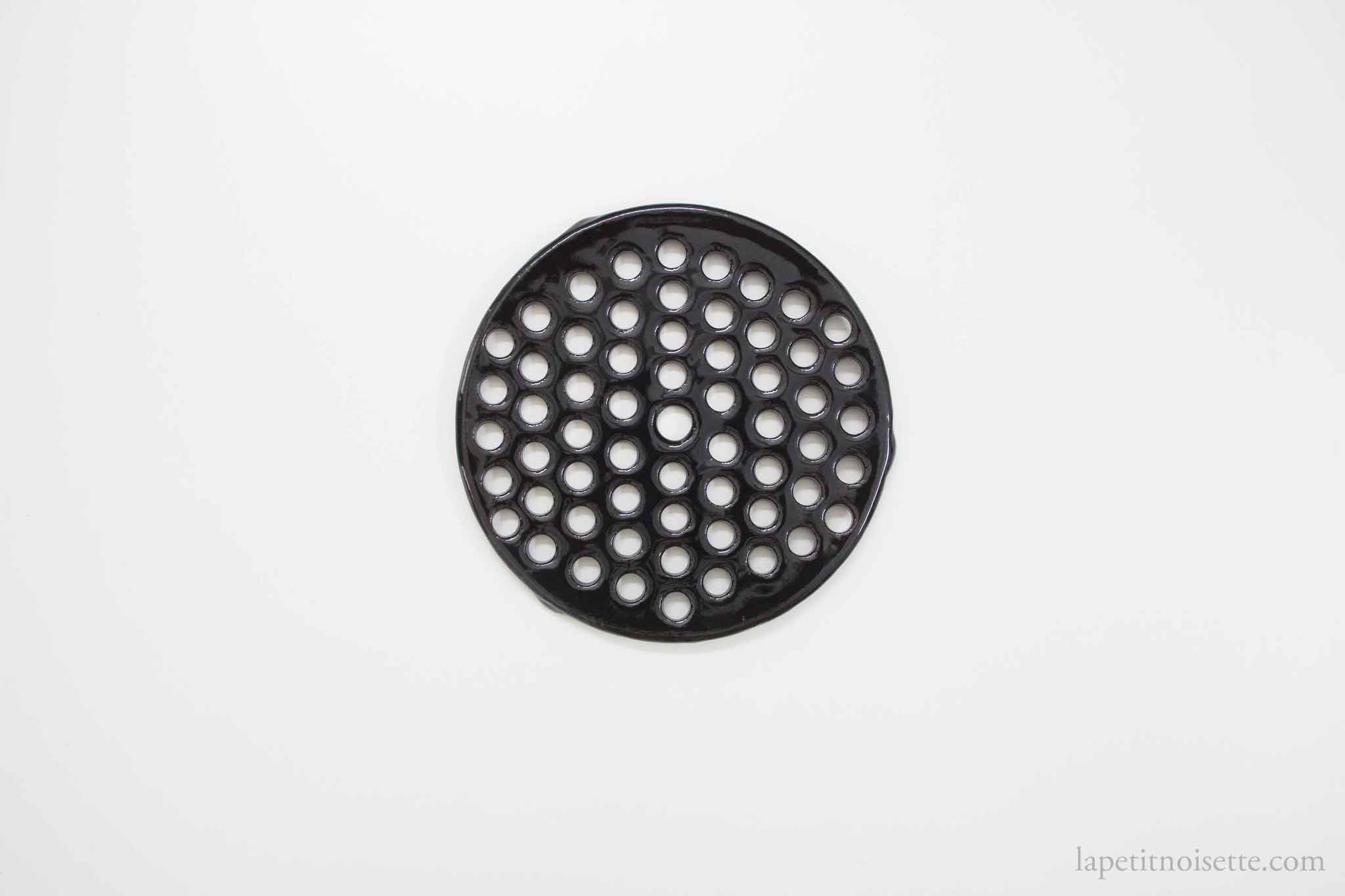
Sourcing a Kumoi Kiln Pot
If you wish to buy a Kumoi Kiln claypot for yourself, they are currently sold at certain high end departmental stores in Tokyo and Kyoto such as Mitsukoshi and Takashimaya. Even then, the selection at these stores tend to be very small, with only the basic claypot rice cooker being sold the last time I checked. The majority of the pots made are made to order by high end restaurants.
It is also possible to order the pots from their website directly here if you have a Japanese address. Bear in mind that each individual claypot takes 2 to 3 months to make, and can take even longer to be delivered to the restaurant if demand is high. The claypots themselves do not come with the steamer inside, which is made to order and can sometimes take up to an additional month to make.
Kumoigama Certification

Pots that are ordered directly from the Kumoi Kiln are delivered in a wooden box. Genuine Kumoi Kiln products come with a certificate of authentication, which is rolled into a scroll and bound with an orange clay unglazed ring made from the same clay used to make the pots, known as “雲井窯の栞”, or Kumoi Kiln’s bookmark.
Authentic pots by Kumoi Kiln also come with their inscription branded into the clay.
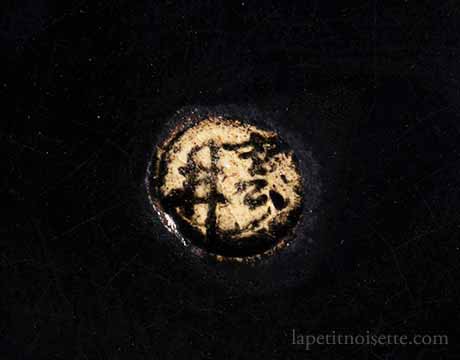
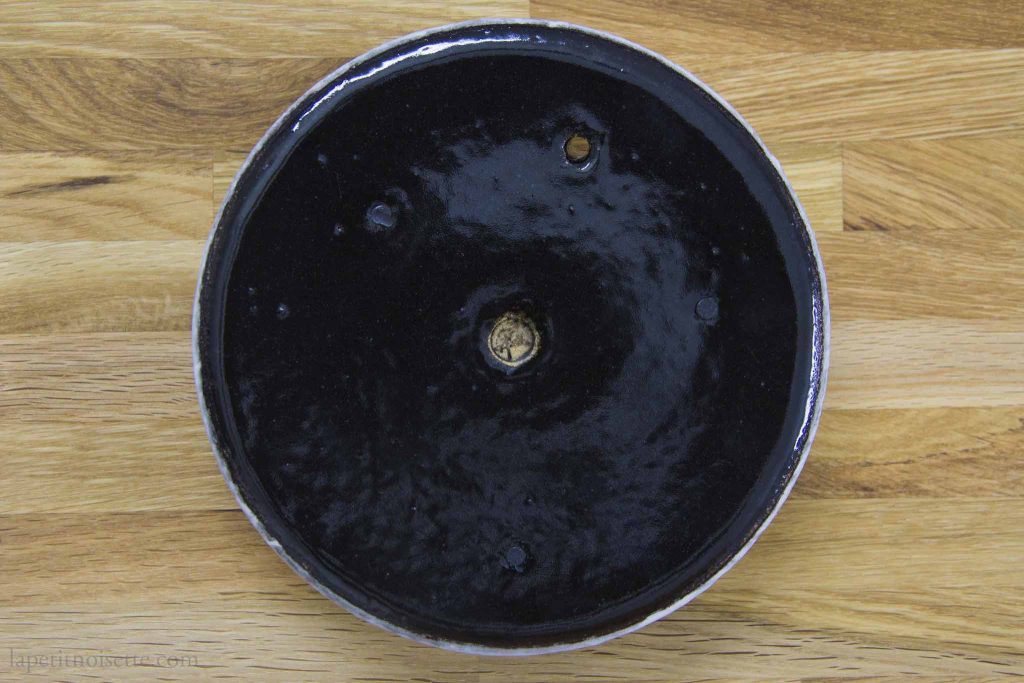
Their website claims that a test of authenticity for Kumoi pots includes the sound it makes when the lid is closed on the pot as the pots are made from thick clay cooked at a high temperature and thus make a unique sound. A sample of the recording of their authentic sound can be found here.
A sample of my recording can be found here for the Duck Donabe Claypot:
and the rice claypot:
We’ve actually found several shops in Kappabashi street, Tokyo that sell counterfeit versions of his clay pots that are labelled as Kumoi Kiln but have unglazed bottoms and no seal of authentication.
Hi! I’ve been following your site for a while now and finally got the courage to go ahead and give you a shout out from Humble Texas! Just wanted to say keep up the great job!
Thank you so much! 🙂
Hey I’m in Austin, Texas. And I cook a lot of his recipes. If you do as well. We should get together and cook!
Very good read. Love your niche reviews. I have been very interested in buying the kumoi kiln’s rice cooker donabe since reading your review. I have some questions that I didn’t manage to find much information about.
1. Do you know if I can cook 1 cup of rice in the 3 cup kumoi kiln donabe? (I know that certain donabes like the Nagatanien Kamadosan 5 cup cooker is only recommended to cook at least 3 cups of rice)
2. I’ve seen another donabe by kumoi kiln which is called the whimsical rice donabeきまぐれ御飯鍋. It is also about 10000yen more expensive than the usual ones. Do you know what’s the difference between the usual one and the whimsical one? And any difference in the rice quality when it’s cooked.
3. Lastly, I was wondering whether you have any insight on Ginpo’s Kikka rice cooker donabe.
Thank you for reading my reviews! From my experience you can cook 1 cup of rice in a 3 cup kumoi kiln donabe but the resulting texture isn’t the best or most uniform. Because you can go straight to high heat from the very beginning, the water needed for 1 cup of rice will boil and evaporate much faster so you’d need to change the timings or risk having rice at the bottom burn and rice on top slightly mushy. I’d recommend just cooking the recommended 3 cups and placing the extra rice in an electric rice warmer, wrapping in cling wrap and refrigerating or placing it into an electric rice cooker and switching on the keep warm function. You could try and experiment with the timings and heat control to cook 1 cup of rice in the 3 cup size donabe. I’ve never tried this combination but I’d recommend medium high heat till you see steam coming from the donabe and then switching off the heat and resting it for 20 minutes and then adjust from there. Bear in mind that the kumoi kiln donabes have the highest heat retention of all the ones I’ve tried.
2. I am actually very familiar with the whimsical rice donabe (きまぐれ御飯鍋). From what Nakagawa Ippento said, the design of this donabe is a result of years of feedback from different chefs on how he could change his original donabe design to cook even better rice. Apparently the culmination of his knowledge was then built into this donabe, hence its higher price. I did have a chance to experiment around with it and I’d say that it’s very good if you’re chasing after a particular style of rice/the best expression of that variety. If you dive into the world of Japanese short grain rice, there are many varieties that have different levels of bite, chewiness, stickiness and grain size. If you’re into that level of detail into your rice cooking then I’d recommend paying the additional money for it. In the restaurant I worked at, we just used his standard donabe and I know that most other restaurants do the same. My dream is actually to own the whimsical rice donabe in the snow white glaze, which is very hard to buy. The whimsical donabe can be hard to find in other colors than black or brown so if you do get the chance to buy one I’d recommend it.
3. If you’d split donabe makers into artisanal and mass manufactured ones, Sutematsu Kumamoto’s Ginpo donabe are definitely mass manufactured. You can tell because they have an international presence and even information about it from big retailers in English. That’s not to say they aren’t good quality but I personally prefer putting my money with a small producer rather than a factory. The thing about donabes is that they practically last forever (provided you don’t drop and smash them) so even if you buy a factory made mass produced one, it’ll still last you for a long long time. My fascination with producers like kumoi kiln is more similar to buying an aesthetically beautiful pot/piece of artwork that you can admire on your shelf that also cooks rice at the same time, rather than a simple cooking utensil.
Thanks for the detailed answers, it really helps as there is not much information about this donabe. Guess what, I got my hands on a kuroraku 3-gou kumoigama. I have not tested it extensively but so far it has turned my cheap vietnamese japonica rice into rice that can rival entry-level Japanese restaurant ones in my country. Can’t wait to try all the different variants/sub-cultivars. I hope you find your whimsical snow glazed ones. By the way, Nakagawa Ippento started selling 5-gou rice pots, so it’s not just limited to 3-gou now.
Hi, thank you for such a wonderful article. After a very long research I decided to buy one of the pots, however when ordering from the Kunoi Kiln website it does not let me proceed with the order, although the website translates in English I am asked to write in Japanese, unfortunately I do not speak the language. I live in London and would like to order the 5 go pot, any suggestions? Many thanks, Lili
Unfortunately they don’t sell to anyone outside Japan and I’ve yet to find a place that sells them outside Japan. Even if you do succeed in finding someone to put in the order request in Japanese into their website, they’ll only send it to an address in Japan. Sadly you’re going to need to travel to Japan if you really want to buy one. If you do know someone who speaks mandarin though, you might be able to buy it on Taobao (the Chinese version of amazon) and ship it to the UK. My only substitution recommendation would to otherwise buy an iga-yaki (nagatanien) donabe rice cooker which is readily available in the UK.